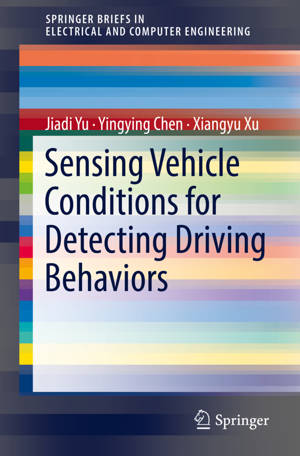
- Retrait gratuit dans votre magasin Club
- 7.000.000 titres dans notre catalogue
- Payer en toute sécurité
- Toujours un magasin près de chez vous
- Retrait gratuit dans votre magasin Club
- 7.000.0000 titres dans notre catalogue
- Payer en toute sécurité
- Toujours un magasin près de chez vous
Description
This SpringerBrief begins by introducing the concept of smartphone sensing and summarizing the main tasks of applying smartphone sensing in vehicles. Chapter 2 describes the vehicle dynamics sensing model that exploits the raw data of motion sensors (i.e., accelerometer and gyroscope) to give the dynamic of vehicles, including stopping, turning, changing lanes, driving on uneven road, etc. Chapter 3 detects the abnormal driving behaviors based on sensing vehicle dynamics. Specifically, this brief proposes a machine learning-based fine-grained abnormal driving behavior detection and identification system, D3, to perform real-time high-accurate abnormal driving behaviors monitoring using the built-in motion sensors in smartphones.
As more vehicles taking part in the transportation system in recent years, driving or taking vehicles have become an inseparable part of our daily life. However, increasing vehicles on the roads bring more traffic issues including crashes and congestions, which make it necessary to sense vehicle dynamics and detect driving behaviors for drivers. For example, sensing lane information of vehicles in real time can be assisted with the navigators to avoid unnecessary detours, and acquiring instant vehicle speed is desirable to many important vehicular applications. Moreover, if the driving behaviors of drivers, like inattentive and drunk driver, can be detected and warned in time, a large part of traffic accidents can be prevented. However, for sensing vehicle dynamics and detecting driving behaviors, traditional approaches are grounded on the built-in infrastructure in vehicles such as infrared sensors and radars, or additional hardware like EEG devices and alcohol sensors, which involves high cost. The authors illustrate that smartphone sensing technology, which involves sensors embedded in smartphones (including the accelerometer, gyroscope, speaker, microphone, etc.), can be applied in sensing vehicle dynamics and driving behaviors.
Chapter 4 exploits the feasibility to recognize abnormal driving events of drivers at early stage. Specifically, the authors develop an Early Recognition system, ER, which recognize inattentive driving events at an early stage and alert drivers timely leveraging built-in audio devices on smartphones. An overview of the state-of-the-art research is presented in chapter 5. Finally, the conclusions and future directions are provided in Chapter 6.
Spécifications
Parties prenantes
- Auteur(s) :
- Editeur:
Contenu
- Nombre de pages :
- 75
- Langue:
- Anglais
- Collection :
Caractéristiques
- EAN:
- 9783319897691
- Date de parution :
- 26-04-18
- Format:
- Livre broché
- Format numérique:
- Trade paperback (VS)
- Dimensions :
- 234 mm x 160 mm
- Poids :
- 136 g

Les avis
Nous publions uniquement les avis qui respectent les conditions requises. Consultez nos conditions pour les avis.






